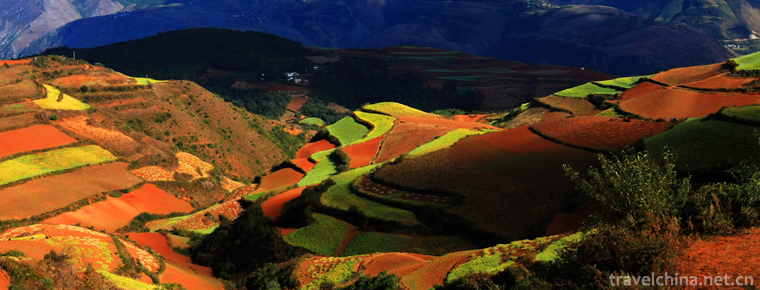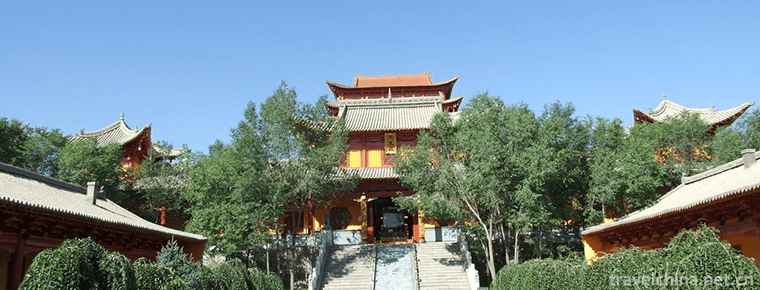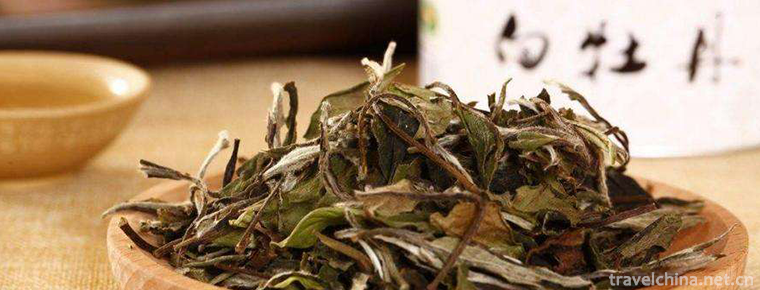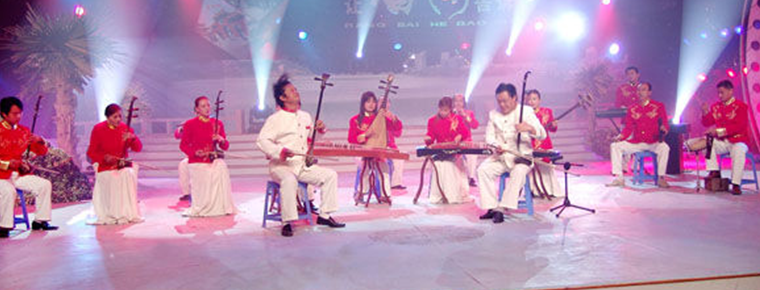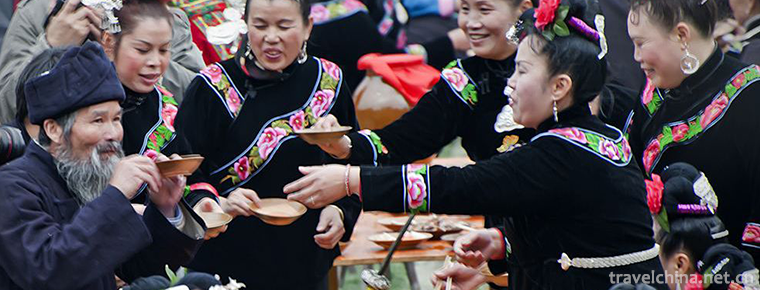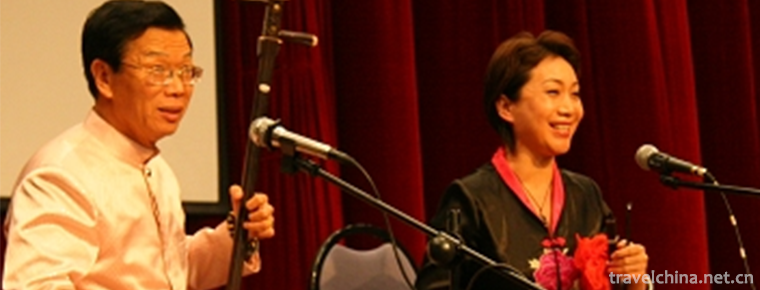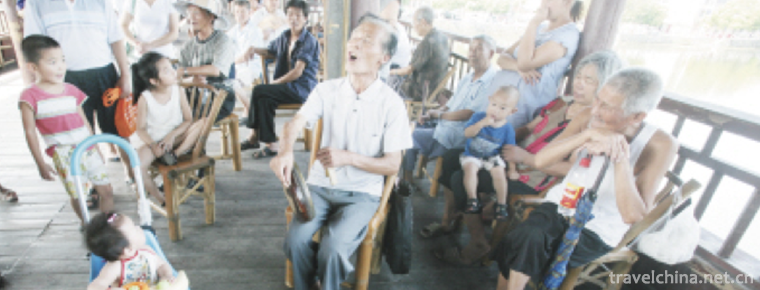Tujia Folk Songs
Tujia Folk Songs
Tujia folk song is a unified folk song composed of lyrics and music. It is the product of the intersection of literature and music. The lyrics of Tujia folk songs belong to the language art, which expresses feelings and is perceived by people. The music of Tujia folk songs, in the form of sound externalization, produces beautiful Lyric effect, directly acts on the hearing, and creatively displays the lyric content of Tujia folk songs. The combination of lyrics and music shapes the musical image and enriches Tujia folk songs, thus making the artistic charm of Tujia folk songs endure.
On November 11, 2014, Tujia folk songs were approved by the State Council to be included in the fourth batch of representative projects of national intangible cultural heritage.
historical origin
In the beautiful geographical environment and rich historical and cultural accumulation, Tujia ancestors created their own unique style of "folk song culture". In the agricultural age, folk songs became indispensable spiritual food in their lives.
Tujia people live in the mountains. Because of the inconvenience of transportation, information blockade, communication between people, and even emotional communication, it is very difficult. The mountain blocked, across the river, rarely seen, and had to be expressed in the form of shouting and singing folk songs. Thus, a folk song came into being. Its lyrics are rich in content and varied in form. For example, love songs, bitter songs, hunting songs, singing "chants" lonely and lonely, Bineng Saizhi singing "tray songs", daughter singing "weeping and marriage songs", red and white wedding songs singing "opening songs", "persuasion songs", singing "spring songs" in the first month, building houses singing "blessings song", "Shangliang song", returning to heaven for a hundred years.“ Around the coffin, ""Sing a song of filial piety".... There is also a set of gongs and drums playing "Grass-weeding Songs", one after another, to stimulate people to forge ahead; amusing "Liar Songs", let people yearn for, laugh. It can be said, "Wedding, funeral, marriage, singing hall, joy, anger and sorrow are all songs".
artistic characteristics
Classification of Folk Songs
According to traditional customs, Tujia folk songs can be divided into five categories: folk songs, grass gongs and drums, labor chants, children's songs and children's songs, folk songs and so on.
Folk songs: Tujia folk songs have two kinds of language: Tujia folk songs and Chinese folk songs; there are two kinds of high-pitched and peaceful-pitched voices; there are differences in structure between "one voice", "three voices", "four sentences" and "five sentences"; there are love songs, ancient songs, etiquette songs, Life songs and bitter love songs in content.
Grass gongs and drums: also known as grass song, gongs and drums, excavation song, etc.
Work chant: Tujia people, who live in Wuling mountain area and on both sides of Youshui and Lishui, haul timber and materials, lift stones by prying rocks, sail boats and so on, occupy an important position in labor and life, so sailing chant, tugwood chant and rock worker chant are most popular.
Rocking Children's Songs and Children's Songs: Rocking Children's Songs in Tujia are popular in the slopes of Longshan Mountain and Baojing. The melody is composed of upper and lower sentences, and the rhythm is stable. There are two kinds of rocking children's songs in Pushi County, feather mode and levy mode.
Custom songs: Wedding songs, filial piety songs, hand-waving songs, etc.
The Characteristics of Lyrics
Firstly, the content of Tujia folk songs is more implicit, and a lot of analogy techniques are used. For example, "Ma Sang Shuer sets up the lampstand", using keys and locks to represent husband and wife, cleverly using the technique of empathy and personification, effectively enhance the appeal of language, express the constant feelings between husband and wife.
Secondly, the lyrics of folk songs are often used with linings, showing a very high artistic language beauty, making the songs melodious, tactful and witty. Such as: Lang passed by the door in the call, call feed and so on.
Thirdly, the lyrics of Tujia folk songs are mostly about life. The lyrics include both long narrative poems and short oral life songs. Long narrative poems are composed of seven words and four sentences. The lyrics emphasize rhyme and rhythm. They often use metaphor, exaggeration and personification to vividly display geographical features, folk customs and reproduce real life scenes. From the word structure of the lyrics, Tujia folk songs have three-sentence, Four-Sentence and five-sentence structures of five-word or seven-word, of which seven-word and Four-Sentence structures are the main ones. The first sentence begins with rhyme, the second with rhyme, and the fourth with rhyme. Following the general law of the seven-character Chinese poetry, that is to say, from the beginning to the end, from the end to the end. "Folk songs come out of the mouth," the so-called "see wood, see things, say things", life is very interesting. This is the reason why folk songs have strong vitality, and the essence of their value lies only in this.
Fourthly, the lyrics of the Tujia nationality are very content and have the significance of inspiration and education. For example, "Cold water makes tea slowly strong": "Chinese chives blossom fine velvet, have the intention Lang is not afraid of poverty, as long as two people are in good mood, cold water makes tea slowly strong." The lyrics are very simple, just like Buddhist admonitions, chatting a few words can be done without letters pointing directly to people's hearts. Like traditional Chinese literature, Tujia folk songs have a voice beyond the strings, which makes people memorize endlessly and reflects the infinite wisdom of the working people.
Melody characteristics
The tunes of Tujia folk songs are graceful and sincere, full of local flavor, and the rhythm is interspersed with a thick national style. The general phonetic examples are so, la, do, re, so. On the basis of these examples, with roundabout polishing, a moving and very distinctive melody has been formed. Most of the musical structures are Four-Sentence patterns. Generally, two-sentence patterns are formed into Four-Sentence patterns through repetition and variation. There are also five-sentence Tujia folk songs, most of which are repetitions of the fourth sentence or changes of three or four sentences. In the structure of Tujia chants and sacrificial songs, there are mostly structural elements of introducing and receiving tunes. Tujia folk song is a pentatonic scale system, the rhythm is a mixture of even and odd beat. The tone is mainly composed of narrow minor rhyme, with emphasis on minor colors, preferring progressive and narrow interval rotation. The rhythm is generally moderate and moderate, but the rhythm of jumping and mourning is changeable. For example, the five-tone mode of Crying Marriage Song, which has melody and cadence, is an art of combining singing and crying.
In Tujia folk songs, there are four modes: symbols, palaces, feathers and merchants. Symbols, palaces and feathers are the most common modes, while angular modes are few.
In melody transformation, homophone alternation and homophone repetition are more frequent. Moreover, melody is mainly extended by homophonic repetition. The alternating repetition of homonyms also depends on the change and repetition of melody. For example, some folk songs have a large second tone above the carved main tone, so that the melody of the work is more clear, the number of repetitions of each tone increases, and the melodic structure linked by homonyms always appears continuously and alternately, so that the melody can be extended.
The most prominent feature of the tune of Tujia folk songs is that it is based on tri-tone tune. The melody changes are driven by lyrics. A sentence is a lyric, and the length of the sentence corresponds to the fluctuation of the melody. So the tune of Tujia folk songs is simple, concise, melodious, beautiful, and has a strong sense of rhythm.
Rhythmic characteristics
The rhythm of Tujia folk songs includes even rhythm and even-odd mixed rhythm. In particular, even rhythm is more common. This rhythm is characterized by ease, no sense of haste and oppression. For example, the rhythm of "Goodbye Sentiment of Folk Songs" is a short and long journey of the golden mean, which eases freedom.
Hand-waving song is the most influential large-scale song and dance of Tujia nationality, with a strong sacrificial color, singing with dancing students, dancing with the name of the song. Hand-waving songs have a wide range of contents, such as ethnic migration and settlement, self-defense against the enemy, open up wasteland production and so on. There are different tunes and forms in different places. Yongshun County is a sentence pattern, Longshan County is a sentence pattern, and Baojing County is a free sentence pattern. In addition, there is a kind of intonative free sentence pattern, which is more popular. But no matter what kind of sentence pattern, it has distinct rhythm and vivid characteristics.
Labor chant is a song often sung by Tujia people in Western Hunan. Often a lead singer sings substantive words and help the voice sing functional words in order to inspire morale and improve labor efficiency. The rhythm of the song is firm and powerful, bold and bold, natural and simple. And the rhythm is fixed, the cycle repeats. Short and simple, repetitive, is its rhythm characteristics. For example, there are four kinds of tugwood trumpets: two-tone trumpet, three-tone trumpet, four-tone trumpet and indirect trumpet. The three-tone trumpet is named for the three different tunes of the lead singer and the chorus singer, with a steady rhythm. The four-tone trumpet has only eight bars. The lead singer and the chorus each have four different tunes. The higher the pitch is, the shorter and stronger the rhythm is. It is used at the critical moment of towing wood.
There are two forms of the tune of the grass song. The first paragraph is composed of gongs and drums, which lead to a song with a high and melodious tune, free rhythm and decorative melody. The second paragraph is composed of two different tunes and rhythms. The first paragraph is composed of gongs and drums.
The main rhythm characteristics of Tujia folk songs are: generosity, low return, freedom, free and easy, powerful and without losing ease. It reflects the rich feelings of the Tujia people and their simple and straightforward character.
Representative Works
Tujia Folk Songs
In Tujia people's life, the birth of a son and his girlfriends and relatives came to congratulate each other, called eating rice wine; after the banquet, the parents wore straw hats, wiped some pots and rice on their faces, singing and dancing with pop fans or broomsticks in their hands, wishing each other, flirting and selling love, which is the way to sing and jumping, pushing the whole rice banquet to a climax. Villagers call it beating "flower drum", and some call it like flower drum or flower drum opera. "Four Sisters Huang" is a traditional reserved program at the rice banquet. The lyrics of Sister Huang:
"(Male singer) Sister Huang, (Female singer) What are you shouting, (Male) I'll send you a silk scarf, (Female) What do I want you to do with a silk scarf, (Male) wear it on the head of your sister, the road is beautiful, sitting there is someone watching, my charming. (Female) Oh, my brother, you sent so many things, (male) less sand, you don't say so.......................................................
The lyrics, melodies and singing forms of Sister Huang are popular and easily accepted by the masses. There are many kinds of happy flower drum tunes, among which are Nao Wugeng, Huang Sijie, Men's Song, Goodman's Song, Crab Song, Singles Han Song, Frog Song, Marriage Song, Ten Sends, Ten Embroiders, Ten Writings, Ten Thoughts, Guess Song and so on.
Youyang Lantern
The performances of Youyang Flower Lantern include: Open the Gate Tune, Open the Gate of Wealth, Sacrifice to God of Wealth, Zhongzhuangyuan, Five Brights, Five Gentlemen Tunes, Nao Wugeng, Luoyang Bridge, Ten Embroidery, Ten Sendings, Ten Sings, Cross, Ten Love, Ten Xu, Nao Hong Lantern, Seven-Character Sentences of Flowers, Dressing Table, Sweeping Five Gentles, etc. "Senior Luke Official Congratulations", "Love Song", "Shangchashan", "Xie Zhu Cishen", "Cishen Diao", "A Rapeseed", "Beautiful Beauty Combing Hair", "New Year", "Twenty-four Solar Terms", "Singing Cross", "Great Cross", "Xie Master", "Liang Shanbo and Zhu Yingtai", "Meng Jiangnu" and so on.
Inheritance Significance
Tujia folk songs are vivid and sincere. Because it truly reflects and records various aspects of Tujia people's customs, ethics, production and life, social life and custom activities, it has a high value of humanistic research. Tujia folk songs are created by the people and are constantly revised and perfected in circulation. They contain abundant life materials and cultural information. They are the nutrients of art, the inexhaustible source of creation, the basis of advanced culture and art, and have high artistic research value. Tujia folk songs not only play an educational role in imparting labor skills and educating normative behavior, but also play a role in cultural transmission and preservation, so they have a wide range of social values.
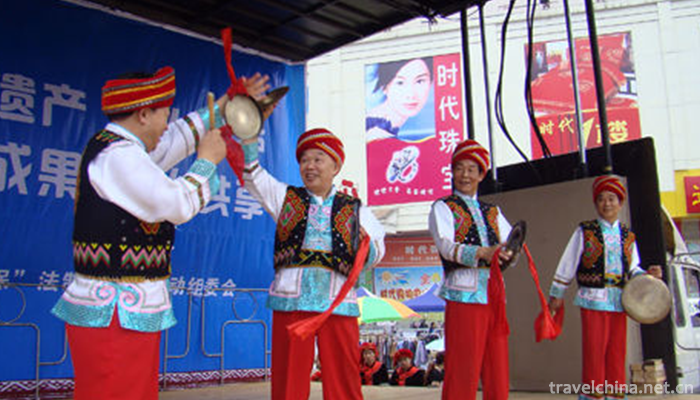
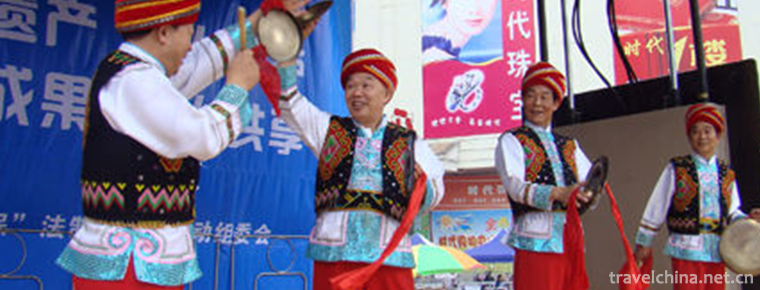
Tujia Folk Songs
-
Dongchuan Red Land Scenic Area
"Dongchuan Red Earth" is located in the north-east direction of Kunming
Views: 205 Time 2018-10-21 -
Huanshui Bay Hot Spring Resort
Huanshui Bay Hot Spring Tourist Area of Anyang City is located at the exit of Anlin Expressway in Anyang Hi-tech Development Zone, Henan Province, close to National Highway 107 and the west side of Be
Views: 327 Time 2019-01-17 -
Shandan Great Buddhist Temple
Shandan Grand Buddha Temple is located at the foot of the mountain 5 kilometers west of Shandan County, Zhangye City, Gansu Province. The old name of "Tufo Temple" was built in the Northern
Views: 190 Time 2019-02-08 -
White Tea Making Skills Fuding White Tea Making Skills
The production technology of Fuding White Tea is the central process of creating Fuding White Tea. It has superb production method and unique scientific and artistic charm
Views: 296 Time 2019-04-03 -
Chao Opera
Chaozhou Opera, known as "Chao Diao", "Chao Yin Opera" and "Bai Zizi Opera", was widely spread in Zhao'an, Yunxiao, Pinghe, Dongshan, Zhangpu and Nanjing of southern Fuji
Views: 197 Time 2019-04-16 -
Song of Sichuan river
Chuanjiang chant is a kind of traditional folk singing form that the shipworkers in Chuanjiang valley of Sichuan and Chongqing area lead the singing by the trumpeters for unified movement and rhythm
Views: 177 Time 2019-04-19 -
Major tune
The major tune was originally called "drum tune". Varieties of Quyiqu. It was first prevalent in Kaifeng, Henan Province, and then spread to Luoyang, Nanyang and other places.
Views: 377 Time 2019-04-23 -
Miao New Year
Miao year, the first year of the Miao calendar, is the most solemn traditional festival of the Miao people. The time spent in different areas varies from September to the first month of the lunar cale
Views: 107 Time 2019-06-05 -
Shandong Qinshu
Shandong Qinshu is one of the traditional folk art varieties in Shandong area, also known as "Xiaoqu", "Yangqin", "Shandong Yangqin", "improved Qinshu" and so o
Views: 215 Time 2019-06-13 -
Yongkang Drum Ci
Yongkang Drum Ci is a rap art in Yongkang area of Zhejiang Province. It belongs to the form of singing and talking, which is mainly composed of singing. Because of the use of local dialect performance
Views: 321 Time 2019-07-14 -
Chengdu Yongling Museum
The Royal Museum of Wang Jian, located at No.10 Yongling Road, Jinniu District, Chengdu, covers a total area of 54000 square meters, and is composed of three parts: cultural relics protection area, comprehensive museum and garden protection area.
Views: 162 Time 2020-10-18 -
Technical requirements of Chinese embroidery
The technical requirements of embroidery are: smooth, even, flat, even and clean. Smooth refers to straight straight straight line and smooth curve; neat refers to neat pointer trace and no uneven edge; flat refers to accurate gesture, plain
Views: 334 Time 2020-12-12
